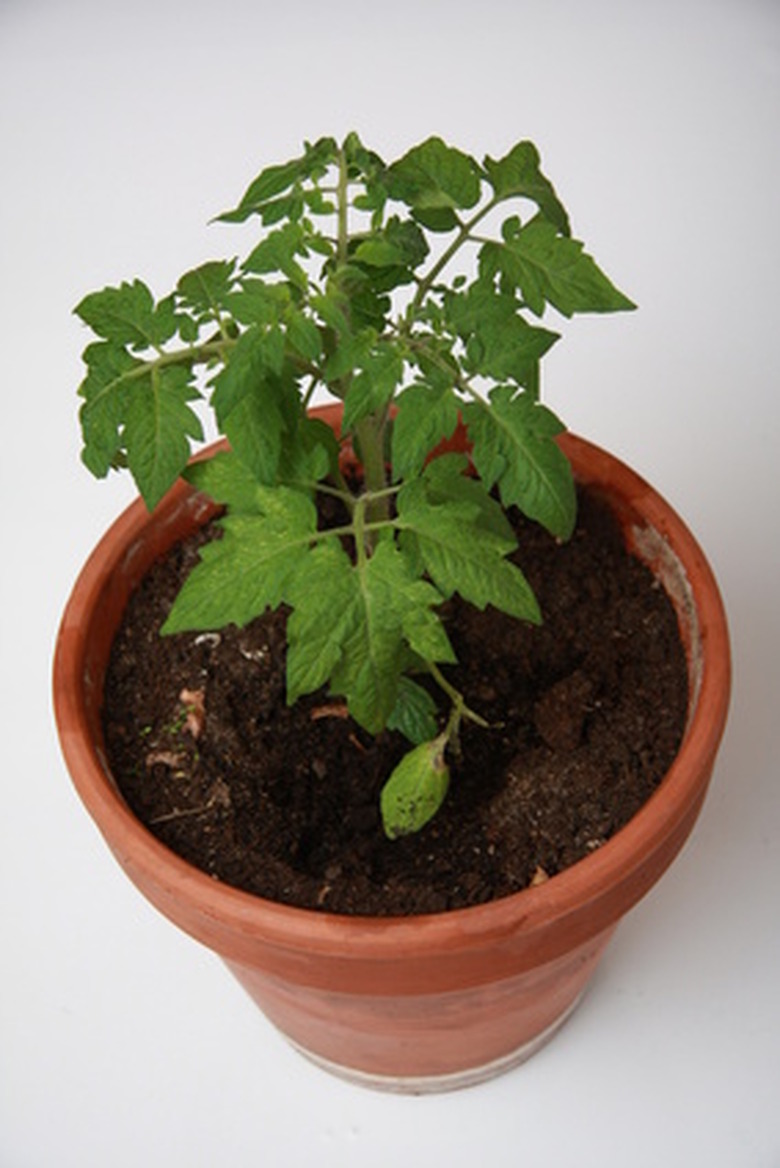Cold Weather Effects On Tomato Plants
Eager gardeners often start vegetable gardens as soon as the threat of frost is gone. Planting vegetables, especially tomatoes, in cooler weather doesn't mean that you will be harvesting before your neighbors. Instead, you may be exposing your plants to disease and growth problems that could be minimized by waiting. Daytime temperatures below 70 degrees F or evening temperatures consistently below 50 degrees F can damage or destroy tomato plants.
Blossom Drop
Blossom drop is one of the most obvious effects of cold weather on tomato plants. When overnight temperatures consistently drop below 50 degrees F, or daytime temperatures do not reach 70 to 75 degrees F for several days, tomato blossoms fall off the plant. Cooler temperatures slow the germination process and make it harder for fruit to set.
- Eager gardeners often start vegetable gardens as soon as the threat of frost is gone.
- When overnight temperatures consistently drop below 50 degrees F, or daytime temperatures do not reach 70 to 75 degrees F for several days, tomato blossoms fall off the plant.
Gray Mold
Temperatures consistently below 70 degrees F, coupled with wet weather, encourages development of gray mold. Gray mold affects both tomato plants and developing fruit, with no effective treatment once a plant is infected. Young seedlings, and distressed and injured plants are the most susceptible to gray mold. Gray mold spores spread easily with wind. Gray mold is best prevented through adequate ventilation between tomato plants in fields, and relative humidity below 80 percent in greenhouses. Infected plants should be destroyed, not composted.
Phosphorus Deficiency
Cooler weather early in the growing season inhibits phosphorus absorption in tomato plants. Phosphorus is essential for tomato plants to flower and produce fruit. Plants with a phosphorus deficiency will have purple leaf veins, or the entire plant may have a purple cast to it, according to Texas A&M's agricultural website. Adequate fertilizing can help control phosphorus deficiency problems.
- Temperatures consistently below 70 degrees F, coupled with wet weather, encourages development of gray mold.
- Gray mold is best prevented through adequate ventilation between tomato plants in fields, and relative humidity below 80 percent in greenhouses.
Root Damage
Tomato plants rely on a complex deep root system to produce an abundant harvest. Cool and freezing weather inhibits adequate root development. As a result, plants do not absorb enough nutrients to stay healthy or produce fruit. If roots are too damaged or undeveloped, the plant dies.
Protection
You have several options to protect your tomato plants from cooler temperatures. Plastic mulch helps warm the soil and keep moisture levels consistent. Carefully covering plants helps trap heat by creating a "greenhouse effect" around the covered plants. Use row covers designed for this use; heavier materials like sheets can get too heavy and damage plants. If you are unable to cover your plants, hanging a white sheet near tomato plants reflects the sun's heat and helps plants stay warm.
- Tomato plants rely on a complex deep root system to produce an abundant harvest.
- Use row covers designed for this use; heavier materials like sheets can get too heavy and damage plants.
